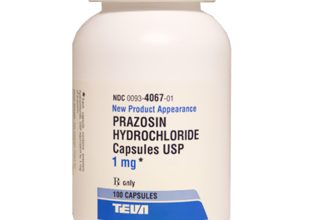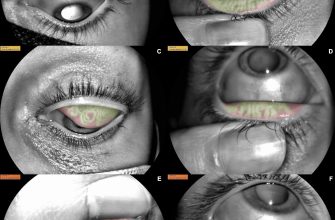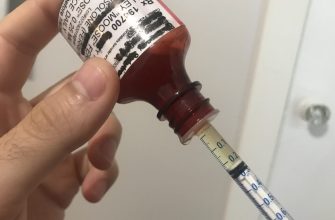Avoid Benadryl for asthma symptoms. Diphenhydramine, the active ingredient in Benadryl, can dry bronchial secretions, potentially worsening asthma attacks. This is especially true for children.
Instead of Benadryl, consult your doctor immediately if you experience asthma symptoms. They can accurately diagnose the issue and prescribe appropriate medication like albuterol inhalers for quick relief or inhaled corticosteroids for long-term control. Self-treating with Benadryl might delay crucial medical intervention.
Remember, asthma management requires a personalized plan. Your doctor will consider your specific medical history and severity of symptoms to create an effective treatment strategy. This may include regular checkups and adjustments to your medication. Ignoring proper medical advice can have serious consequences.
Always discuss any over-the-counter medications, including Benadryl, with your doctor, especially if you have asthma. They can help you determine if Benadryl is appropriate for you and what other options are available. This ensures your safety and promotes effective asthma management.
- Benadryl and Bronchial Asthma
- Why Benadryl Can Be Problematic
- Safer Alternatives
- Understanding Benadryl’s Mechanism of Action and Potential Risks
- Benadryl’s Role in Treating Asthma-Related Symptoms (If Any)
- Interactions Between Benadryl and Asthma Medications
- When to Seek Medical Attention Regarding Asthma and Benadryl Use
- Severe Reactions
- Persistent Symptoms
- Medication Interactions
Benadryl and Bronchial Asthma
Avoid Benadryl if you have asthma. It’s a common antihistamine, but it can worsen asthma symptoms for some individuals.
Why Benadryl Can Be Problematic
Benadryl, or diphenhydramine, is an antihistamine that works by blocking histamine, a chemical your body releases during allergic reactions. However, it also has anticholinergic effects. These effects can dry your bronchial secretions, potentially leading to thicker mucus that obstructs your airways.
- Increased airway resistance: The drying effect can make it harder to breathe.
- Increased risk of bronchospasm: In some asthmatics, this can trigger a severe asthma attack.
- Medication interactions: Benadryl can interact negatively with some asthma medications.
Safer Alternatives
If you need relief from allergies, consult your doctor or pharmacist. They can recommend safer alternatives such as:
- Non-sedating antihistamines: Cetirizine (Zyrtec) or fexofenadine (Allegra) are less likely to cause drowsiness or worsen asthma.
- Intranasal corticosteroids: These nasal sprays effectively treat allergic rhinitis without the risks associated with Benadryl.
- Leukotriene modifiers: These medications help control inflammation in the airways.
Always discuss any allergy medication with your doctor, especially if you have asthma. They can help you find the best treatment plan for your specific needs.
Understanding Benadryl’s Mechanism of Action and Potential Risks
Benadryl, containing diphenhydramine, acts as an antihistamine. It blocks histamine receptors, reducing allergy symptoms like sneezing and itching. This is helpful for some asthma sufferers experiencing allergy-induced bronchospasm.
However, Benadryl’s sedative effects can worsen asthma symptoms in some individuals by depressing respiratory drive and potentially increasing mucus production. This risk is especially notable for people already experiencing breathing difficulties.
Specifically, it can thicken respiratory secretions, making it harder to breathe. This is counterproductive for individuals with asthma, who should prioritize thinning, not thickening, airway mucus.
Therefore, while Benadryl might temporarily alleviate some allergy symptoms, its use for asthma requires careful consideration. Consult a doctor before using Benadryl to manage asthma symptoms or alongside your asthma medications.
Avoid using Benadryl without medical guidance, particularly if you have a history of severe asthma, respiratory issues, or take other medications. It can interact negatively with certain drugs. Always follow prescribed dosages precisely.
Side effects beyond drowsiness, such as dry mouth, blurred vision, and urinary retention, are possible. Reporting any unusual reactions to your doctor is paramount.
Benadryl’s Role in Treating Asthma-Related Symptoms (If Any)
Benadryl, containing diphenhydramine, primarily treats allergy symptoms. It’s an antihistamine, blocking histamine’s action, which causes itching, sneezing, and runny nose. While some asthma symptoms share characteristics with allergies, Benadryl isn’t a first-line asthma treatment.
It may help with some asthma-related symptoms, particularly if those symptoms stem from allergies. For instance, if your asthma is triggered by pollen, Benadryl might reduce allergy-induced inflammation in the airways, offering some relief from coughing or sneezing. However, it won’t address bronchospasm – the tightening of airways that is the hallmark of an asthma attack.
Important Note: Benadryl doesn’t relax constricted airways. For actual asthma attacks, use your prescribed inhaler. Always consult your doctor before using Benadryl alongside your existing asthma medication, as interactions are possible. Benadryl can also cause drowsiness, potentially affecting the use of other medications or even driving safety.
In short: Benadryl may provide limited relief for allergy-induced asthma symptoms but is not a substitute for asthma medication. Always prioritize your prescribed asthma treatment plan.
Interactions Between Benadryl and Asthma Medications
Benadryl, containing diphenhydramine, can interact with some asthma medications. Always inform your doctor or pharmacist about all medications you’re taking, including over-the-counter drugs like Benadryl.
Specific interactions are possible with theophylline, a bronchodilator. Diphenhydramine can increase theophylline levels in your blood, potentially leading to side effects like nausea, vomiting, or palpitations. Your doctor may need to adjust your theophylline dosage if you’re also taking Benadryl.
Similarly, Benadryl may interact with some inhaled corticosteroids, potentially reducing their effectiveness. While the interaction isn’t always significant, your asthma control should be closely monitored if you are using both medications.
Here’s a table summarizing potential interactions:
| Asthma Medication | Potential Interaction with Benadryl | Possible Outcomes |
|---|---|---|
| Theophylline | Increased theophylline blood levels | Nausea, vomiting, palpitations |
| Inhaled Corticosteroids | Reduced effectiveness of corticosteroids | Poorer asthma control |
Remember, this information is for educational purposes only and does not replace professional medical advice. Consult your doctor or pharmacist before using Benadryl concurrently with your asthma medications to minimize potential risks and ensure optimal asthma management.
When to Seek Medical Attention Regarding Asthma and Benadryl Use
Contact your doctor immediately if you experience any breathing difficulties after taking Benadryl, even if mild. This includes wheezing, coughing, chest tightness, or shortness of breath.
Severe Reactions
Seek immediate emergency medical care if you develop a severe allergic reaction (anaphylaxis). Symptoms include hives, swelling of the face, lips, tongue, or throat, difficulty swallowing, and dizziness or lightheadedness. These symptoms can rapidly worsen and are life-threatening.
Persistent Symptoms
If your asthma symptoms worsen or don’t improve after taking Benadryl, or if you notice any new or unusual symptoms, contact your physician for guidance. Don’t delay; timely medical attention is key for managing asthma effectively.
Medication Interactions
Inform your doctor about all medications you take, including over-the-counter drugs like Benadryl, before starting any new treatment or changing your asthma management plan. This will help prevent harmful drug interactions.










